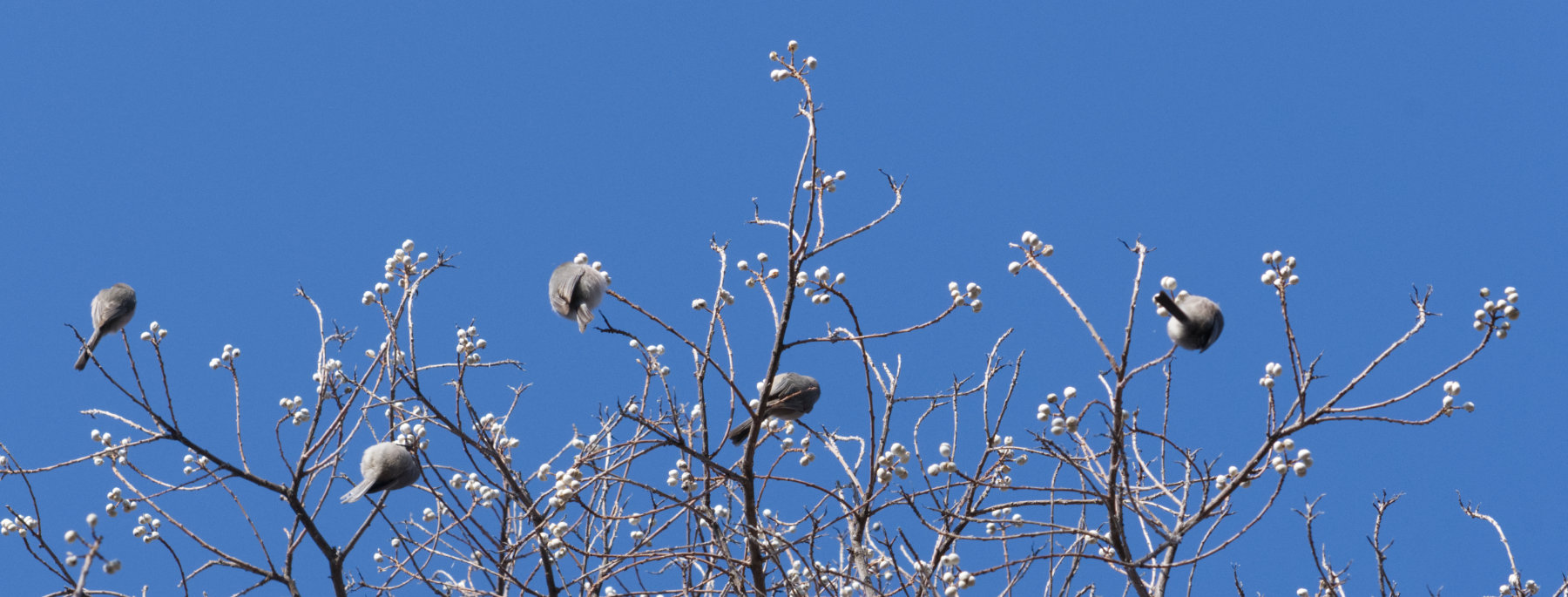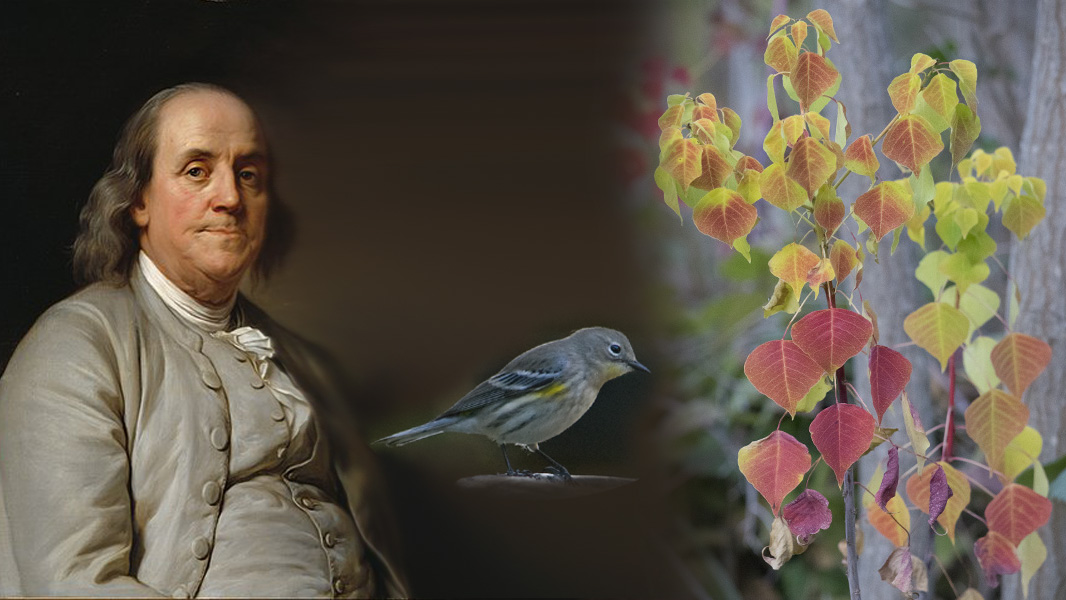
Benjamin Franklin,
& the “Butter-Butt” bird
Many years ago, you wouldn’t see the glowing orange red fall foliage of Chinese Tallow trees (Triadica sebifera) that now are growing along the banks of waterways in Placer County & other locations in CA. Mother Nature didn’t put them here, so how did this non-native tree, now considered invasive in parts of the United States, arrive at this spot? Is the presence of this tree a bad or good thing?
Believe it or not this tree’s journey starts with one of our country’s founding fathers, Benjamin Franklin, one of the first to bring the tree to America. Oil & wax from the prolific white seeds of the China native Tallow tree had been harvested by the Chinese for 1500 years. Aware of this, Franklin saw these fast-growing trees as a way to provide his newborn country with materials to make candles, soap, and other products made from the outer seed coat & stillingia oils within the seed. A letter written by Franklin while in London in 1772 shows that he sent some of the Tallow tree seeds he had obtained while overseas back to the US, to be passed on to Jonathan Bryant who would plant them on his plantation in the US state of Georgia. 1
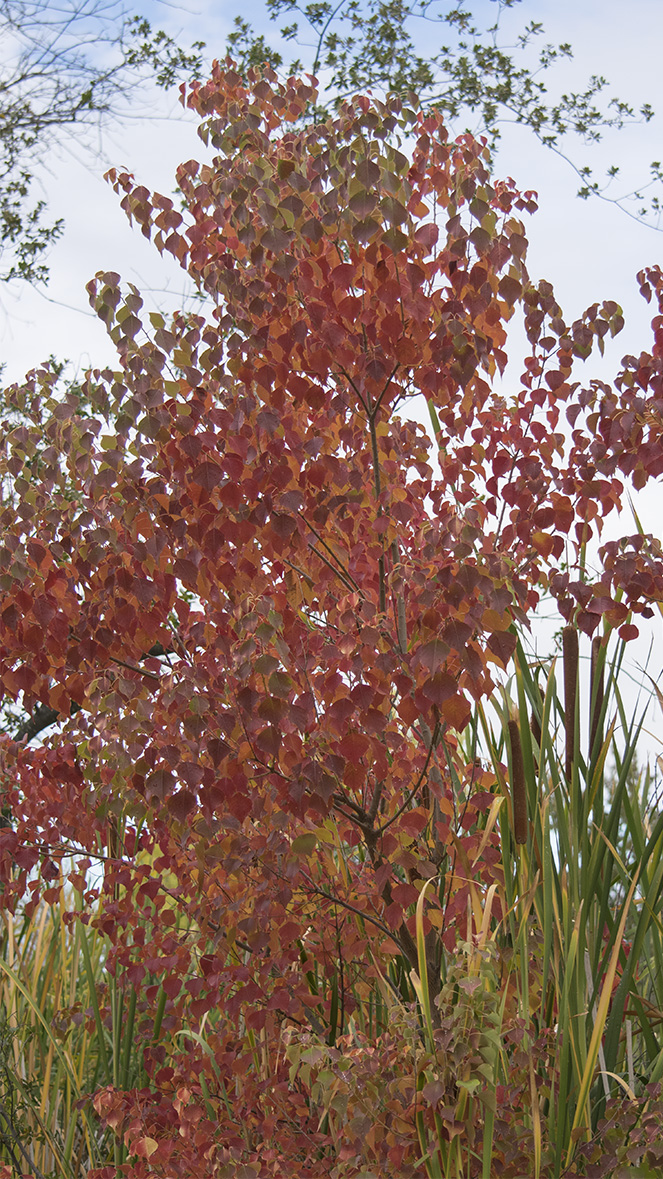
in riparian area, Rocklin, CA

I didn’t do it!
Is Franklin responsible for so many of the Tallows found in the US today?
So, is Franklin responsible for so many of the Tallow trees found in the US today? – Not exactly. DNA evidence discovered in the last decade shows that the trees genetically close to Franklin’s imported seeds are found only in a few thousand square miles of coastal plain in northern Georgia and southern South Carolina. 2 In the early 1900s the US Department of Agriculture also saw the Tallow as useful & promoted a program to cultivate the tree in the US. Seeds brought in by federal biologists were part of trial plantings in the Gulf coastal plains area of Texas. Over time the Tallow spread into the wet grassland prairies & freshwater marshes in Southeast Texas & other Gulf coastal ports, after the program was abandoned. 3
Interestingly, it has also been found that some of these Americanized Tallows grow about 30% faster than their Chinese counterparts. In the US these trees don’t have to devote as much energy to produce chemicals to protect them from being eaten by insect predators found in China since those insects are currently absent here. Despite this however, when Americanized trees were brought back to China and placed into contact with the insect predators, they still outgrew their native counterparts. 4
As its range expanded over time, Chinese Tallow made its way to California as an ornamental shade tree planted in urban areas & favored for its colorful autumn leaves & shallow roots. It has invaded riparian areas in CA relatively recently in comparison to its presence in the southeastern parts of the US. In June 1998, several trees were found growing wild along the American River Parkway in Sacramento, confirming its establishment in northern California. 5 Tallow seedlings have not been found to be very drought tolerant. This factor may limit their spread to mainly riparian areas in the CA Central Valley & elsewhere. 13
Other Names for the Chinese Tallow Tree
(Triadica sebifera, previously named Sabium sebiferum)
Stuff made from the outer seed
- candles
- soap
- cloth dressing
Stuff made from the inner kernel stillingia oil
- crude lamp oil
- machine oils
- varnishes & paints
- can be converted to charcoal, ethanol, & methanol
Biodiesel or Petroleum substitute
(There have been attempts to evaluate the Chinese Tallow as a candidate for biofuels in the last decades. Thus far processing infrastructure for making these fuels has not been established.)
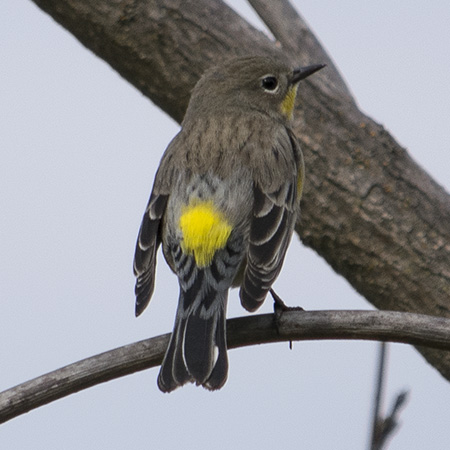
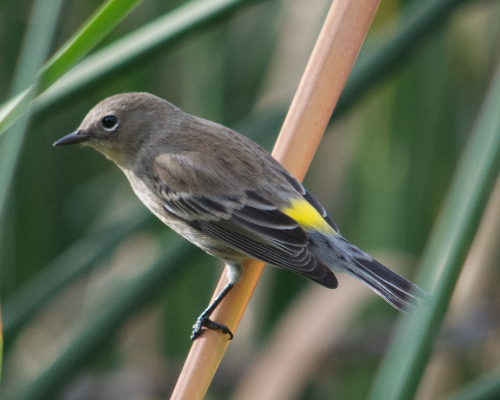
Just as the waxy seeds can be of value to humans they also serve as a food source in winter for birds who rely on them when the insect part of their diet is scarce. One of these birds is the yellow-rumped warbler, a migrating songbird that goes by the nickname “butter-butt” due to the yellow patch of feathers at the base of its tail. 6 Here in CA during the colder months you can observe yellow-rumped warblers feasting on the seeds along with other birds like bushtits, flickers, & various woodpeckers.
Studies done in the eastern US found that “Butter-butt” is one of the few warbler species that can remain in more northern colder climates during winter due to its ability to digest the waxy fruits of plants such as bayberry, & wax-myrtle found in those locations. To do this, yellow-rumped warblers produce elevated levels of bile salts that help them digest saturated fats. To absorb the most nutrients from the fruits, they also can digest the waxy material more than once through a process of retrograde reflux of their intestine contents. 7 In US areas where the Chinese Tallow is present, the waxy seeds of this tree may too be an important winter food source for yellow-rumped warblers & other birds that are able to efficiently digest them.
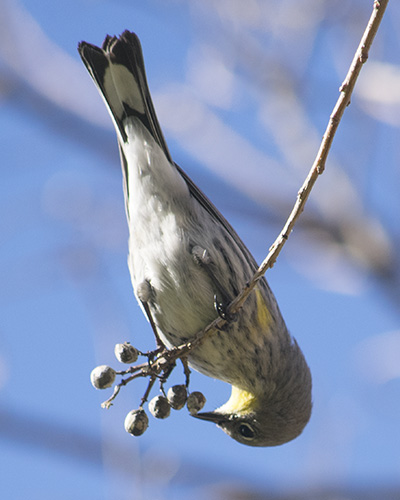

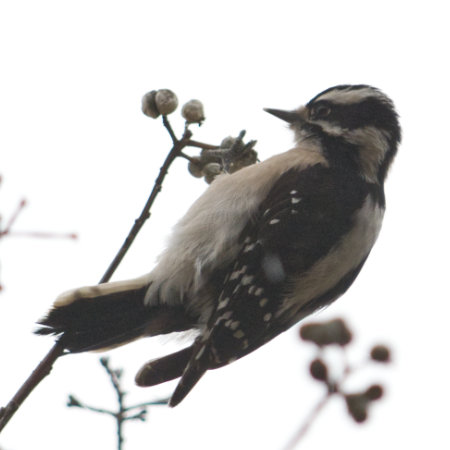
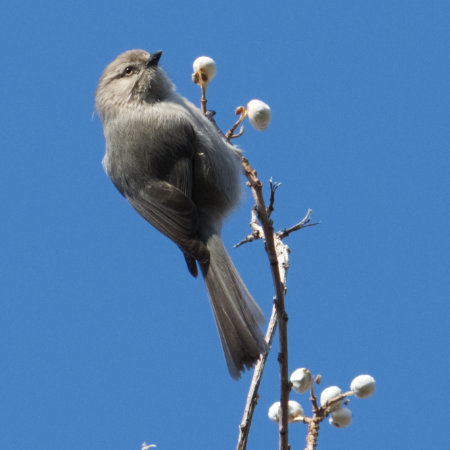
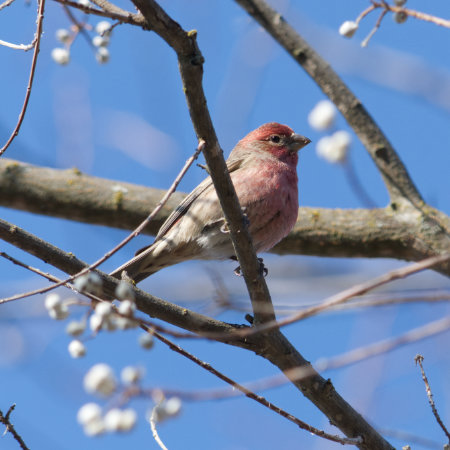

In summer the flowers of the Tallow tree also serve as food for many of the pollinators in the local habitat. CA native butterflies like Lorquin’s Admiral can be seen sipping nectar from the flowers along with bumblebees & a multitude of European honeybees. Tallow blooms mainly in the summer months, so it is not a resource for spring or fall pollinators.
Beekeepers consider the nectar-rich flowers of the tree an important resource to honeybees for honey production. In the Gulf coast states, honeybee hives are often moved to areas with flowering Tallows since the bees will often produce copious amounts of high-quality honey from the trees. 9 For this reason, many beekeepers oppose the recent proposal made by the USDA-APHIS Plant Protection and Quarantine program to introduce to the US two non-native insect predators of the Chinese Tallow tree to limit its spread & numbers. These insects include Bikasha collaris, a small flea beetle that lays eggs in the soil at the base of the tree, where the larva feeds on the roots & the adults will feed on the leaves & young, woody stems. Also proposed to be introduced is the moth, Gadirtha fusca, whose caterpillars consume the Tallow tree leaves. 9
Some in favor of the biocontrol believe it will act to reduce the quantity of Tallows across the southeastern US, but not eliminate it entirely & remaining trees would still support some pollinators. However, it is not known how this reduction might affect beekeepers & for that reason proposed studies by the American Honey Producers Association AHPA to determine the value of the Tallow to the economy are important to consider in this matter. 10
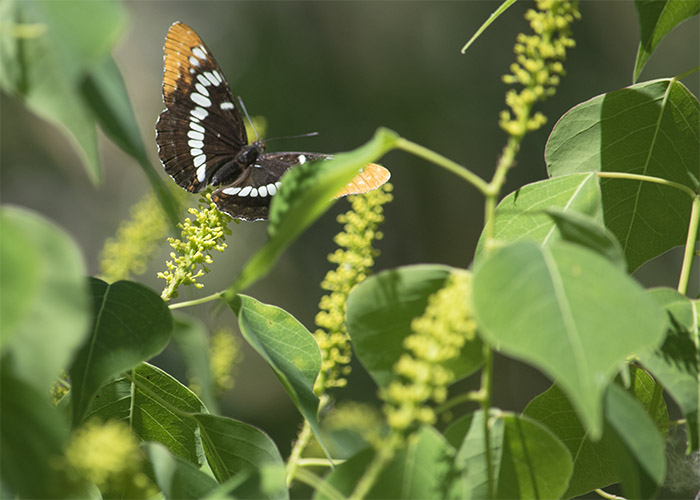
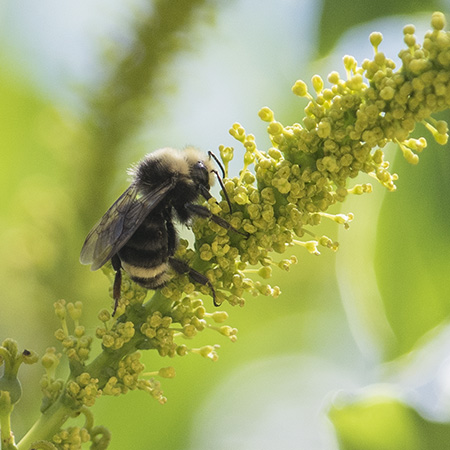
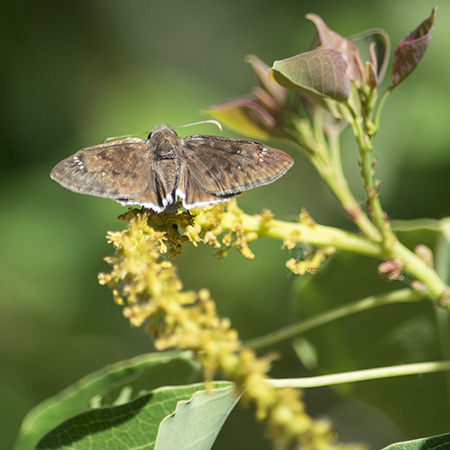

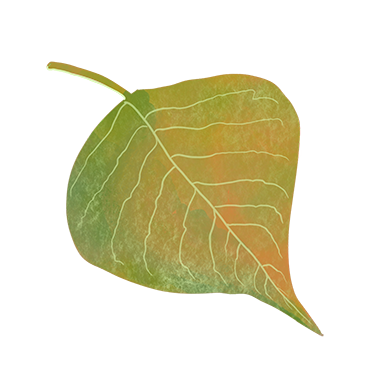

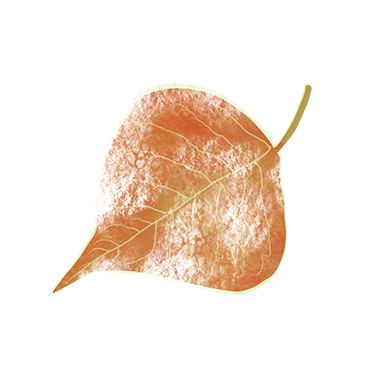
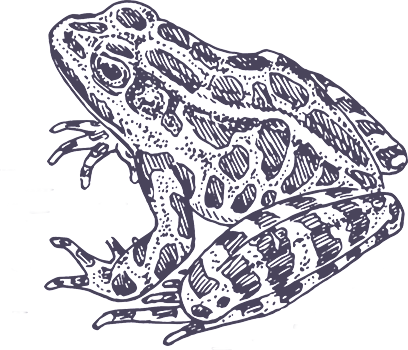
Downsides of the Chinese Tallow in riparian areas include its effects on the aquatic habitat. Some studies have shown that fallen decaying leaves from the Tallow can alter water quality & the microbial composition in a way that negatively impacts frogs.
It was found that Tallow leaves in the water caused premature hatching of frog eggs & the death of many tadpoles. Low dissolved oxygen and pH levels of the water was determined to be the cause for tadpole mortality. Some tadpole species survive in water that has lower oxygen by gulping air at the water surface however more time spent at the surface increases their risk of predation. Living in water with Tallow leaves, Hatchling frogs were also smaller in size & less developed, making them more susceptible to predators. 11
Leaves of many native plants contain lignin which tends to make them more resistant to rotting so they decompose slower. The very thin leaves of the Tallow contain very little lignin & decay fast dumping high quantities of nutrients within the water. 11 These high nutrient loads cause increased microbial activity which in turn reduces the oxygen content of the water.
Studies also show that fungi communities among Tallow leaf litter are less diverse than those that occur with just native plant litter. 11 Why is this significant? – Leaf litter within the water is broken down by microbes into nutrients that other organisms utilize. One very important microbe that helps with decomposition in freshwater ecosystems is fungi. Fungi often plays a key role in making nutrients available to use for other organisms that require them. Given this, the amount of diversity of fungi species within an ecosystem likely affects how nutrients are cycled & the resilience of this system within the aquatic environment.
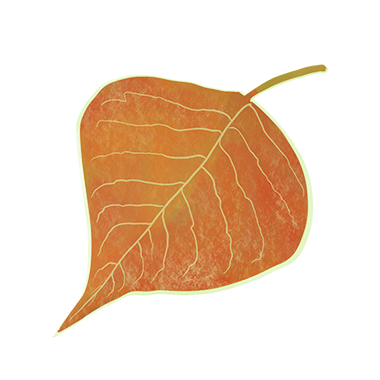

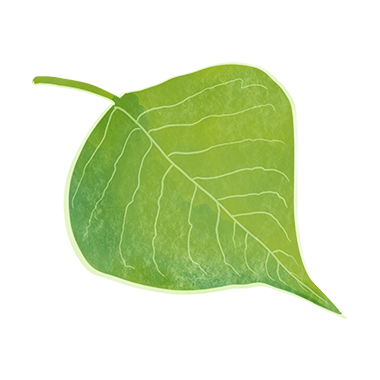

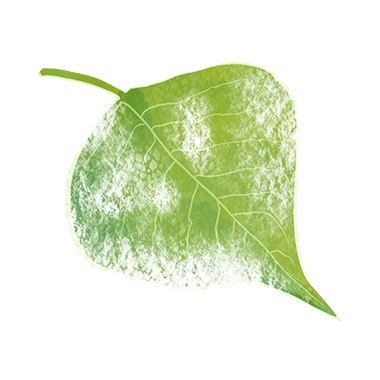
Given the availability of water in riparian areas, Chinese Tallows can outcompete native plants thereby affecting diversity of a habitat & the nutrient cycling within it. The soil & microbes within it change as Tallows dominate a space. Ecosystems such as prairies can be converted into woodland systems. Tallows can grow as fast as 1 meter a year reaching heights as much as 50 ft rapidly. Their seeds have a high germination rate & they are dispersed easily by water movement or by the birds that consume them. They can tolerate levels of salinity that many plants can’t. Trees also live for 15-50 years, with reports of some individuals that have lived as much as 100 years. Due to these qualities, often the areas they invade move towards becoming a monoculture of Tallow.
However, considering habitats where the native plant diversity & their numbers are already at low levels, removal of Tallow trees without replacement of natives may simply open up space for other non-natives to move in. If efforts to help increase native plant growth & diversity cannot be made effectively It is important to consider & quantify the benefits that the Tallow has to the species within the ecosystem in comparison to those benefits, if any, of other non-native invaders.
Chinese Tallows take advantage of disturbed areas, whether by construction, storms, or other means. It was observed that after Hurricane Katrina that Tallows rapidly colonized areas disturbed by the floods caused by the storm. 12 Considering this, quick action taken after disruptions to prevent the Tallow’s foothold along with efforts to help native vegetation occupy disturbed spaces would seem to be important when managing natural open spaces. With the high rate of disruption of wetland & riparian areas occurring in CA whether by development, water diversion, or other means, management of these spaces is crucial to maintain the future health & diversity of the ecosystem.
References
- “Founders Online: From Benjamin Franklin to Noble Wimberly Jones, 7 October 1772.” National Archives and Records Administration, National Archives and Records Administration, https://founders.archives.gov/documents/Franklin/01-19-02-0220.
- Boyd, Jade. “Ben Franklin off the Hook for Chinese Tallow Trees.” Chron, Houston Community News, 29 Sept. 2016, https://www.chron.com/neighborhood/dayton/news/article/Ben-Franklin-off-the-hook-for-Chinese-tallow-trees-9407535.php.
- Gan, Jianbang, et al. “Invasion of Tallow Tree into Southern US Forests: Influencing Factors and Implications …” Can. J. For. Res., Vol. 39: 1346-1356, 1 Jan. 1970, https://www.srs.fs.usda.gov/pubs/33603.
- Wilkins, Alasdair. “Tree DNA Tests Prove That Benjamin Franklin Isn’t Ruining the Gulf Coast.” Gizmodo, Gizmodo, 31 July 2011, https://gizmodo.com/tree-dna-tests-prove-that-benjamin-franklin-isnt-ruinin-5826359.
- California Exotic Pest Plant Council 1997 Symposium Proceedings Weed … https://www.cal-ipc.org/wp-content/uploads/2017/12/1997_symposium_proceedings1946.pdf.
- “A Winter Warbler.” Bryan Pfeiffer, 30 Nov. 2018, https://bryanpfeiffer.com/2014/01/06/a-winter-warbler/.
- “Living off the Wax of the Land: Bayberries and Yellow-Rumped Warblers.” Living Off the Wax of the Land: Bayberries and Yellow-Rumped Warblers, https://sora.unm.edu/node/25112.
- “Triadica Sebifera.” Wikipedia, Wikimedia Foundation, 1 Dec. 2022, https://en.wikipedia.org/wiki/Triadica_sebifera.
- Kalaman, Heather. “Honey Bees and Chinese Tallow: What’s Really Going on?” UFIFAS Pest Alert, https://blogs.ifas.ufl.edu/pestalert/2021/03/09/honey-bees-and-chinese-tallow-whats-really-going-on/.
- “Aphis Tallow Tree Decision Process.” Bee Culture -, 25 Oct. 2022, https://www.beeculture.com/aphis-tallow-tree-decision-process/.
- Virginia McDaniel, Science Writer. “Chinese Tallow Leaf Litter Negatively Affects Frogs.” CompassLive, 12 May 2022, https://www.srs.fs.usda.gov/compass/2022/05/12/decaying-chinese-tallow-leaves-negatively-affect-species-in-aquatic-communities/?doing_wp_cron=1676072538.0119729042053222656250.
- Plaisance, Stacey. “’Super Invader’ Tree Hits South, but Flea Beetle May Be Hero.” AP NEWS, Associated Press, 14 Nov. 2017, https://apnews.com/article/science-us-news-china-environment-trees-5eea057267894e6580283ac01fe75dc4.
- Vogt, James T., et al. “An Overview of Triadica Sebifera (Chinese Tallowtree) in the Southern United States, Empha…” Southeastern Naturalist, https://www.srs.fs.usda.gov/pubs/64098
- “What Products Can Be Created with Chinese Tallow?” What Products Can Be Created with Chinese Tallow? | U.S. Geological Survey, https://www.usgs.gov/faqs/what-products-can-be-created-chinese-tallow.
